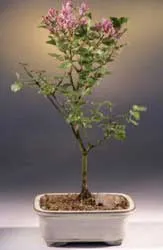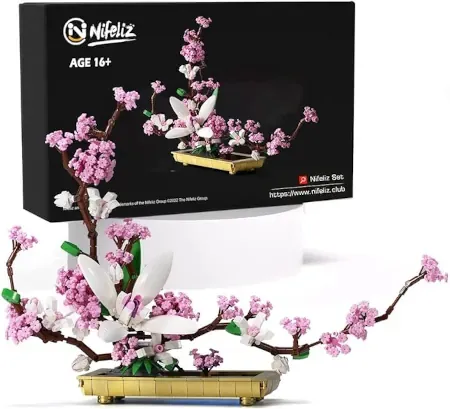Caring for Korean Lilac (syringa palabiniana) Bonsai

The korean lilac naturally grows into a fragrant bush with abundant purple flowers that fade to white, but can be trained into bonsai form. It makes a good choice for bonsai as it naturally only grows to approximately four feet high and is considered very hardy. This article will describe some of the specific points for caring for lilacs.
Water Requirements for Lilacs
Lilacs generally don't need a lot of water, but in hotter climates in the confines of a bonsai pot they may need more than usual. For proper watering techniques for bonsai read this article on watering. The soil should feel on the moist side, but not wet.
Sunlight for Lilacs
Lilacs need to be kept outdoors where they can receive 6 hours of direct sun per day. That being said, in warmer locations (USDA zones 9-10) you may need to find a location where it will receive less sun and more shade so that the tree does not overheat.
Lilac Soil Preference
Lilacs in bonsai pots will prefer a loose well draining bonsai soil. They prefer the soil to be tipped just slightly acidic to neutral in the 6.5 to 7 pH range. This fits the description of many bonsai soil mixes.
Lilacs don't require much fertilizer. If the growth appears stunted you can apply a half strength dosing of a slow release 5-10-10 fertilizer in October. Lilacs should be pruned after they bloom in the spring. If lilacs are pruned in the summer, fall, or winter months the tree may not bloom the following year. Flowers should be removed once they begin to shrivel. Also, if the lilac is fertilized with too much nitrogen it may not bloom, but grow more leaves instead.
Lilac Pests and Diseases
Common pests of lilacs include powdery mildew and scale. Powedery mildew can be treated with a potassium bicarbonate spray or citric acid based sprays available from most home improvement stores.

